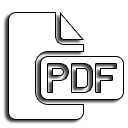I IMPLEMENTATION OF WEIGH-IN USING SBAR COMMUNICATION IN THE PROCESS OF PATIENT TRANSFER TO THE TREATMENT ROOM FOR HEALTH WORKERS: A NARRATIVE REVIEW
DOI:
https://doi.org/10.33859/jni.v2i1.64Keywords:
Keywords: Handover, Health Personnel, Patient Transfer, SBAR Communication,Abstract
Background: Unexpected events (KTD) occur due to delayed communication. This can be prevented by using effective communication. Effective communication is also a major component of providing good nursing care services according to patient needs. One form of effective communication is the SBAR method. SBAR communication consists of 4 components, namely S (situation), B (Background), A (Assessment), and R (Recommendation).
Objective: This study aims to evaluate the implementation of handover using sbar communication in the process of transferring patients to care rooms for health workers.
Methods: This study used a narrative review approach. Narative review identified through a search on the Google Scholar, DOAJ, Biomed Central database and obtained 10 journals that match the inclusion criteria.
Results: The results of this narrative review indicate that the implementation of SBAR communication experienced obstacles such as the urgent situation and the rush of the handover process, differences in perceptions between SBAR users, the burden of demands, and the pattern of SBAR implementation between nurses and other health workers.
Conclusion: The implementation of SBAR in handover during the patient transfer process was carried out quite well, but not maximally, this was because health workers still feel less motivated to carry out SBAR communication and there were still differences in perceptions among health workers. The implementation of this SBAR forms a pattern for its used, both among nurses, nurses and doctors, nurses and pharmacies and others.
Downloads
References
Beigmoradi et al. 2019. Evaluation of nursing handoff skill among nurses using situation-background-assessment-recommendation checklist in general wards. Evidence Based Care Journal, 9 (3): 63-68. Tersedia pada: http://ebcj.mums.ac.ir/article_13892.html. [Diunduh 08 Juli 2020].
Bloom et al. 2015. The situation, background, assessment and recommendation (SBAR) model for communication between health care professionals: A clinical intervention pilot study. International Journal of Caring Sciences. 8(3): 530. Tersedia pada: https://doi.org/10.1007/s11104-010-0419. [Diunduh 2 November 2019].
Fadilah U. 2017. Gambaran komunikasi efektif dalam penerapan keselamatan pasien (studi kasus Rumah Sakit X di Kota Padang). Jurnal Pembangunan Nagari. 2(1): 95-102. Tersedia pada: https://ejournal.sumbarprov.go.id/index.php/jpn/article/view/17/15. [Diunduh : 14 Desember 2019].
Hardini dkk. 2019. Studi fenomenologi: pelaksanaan komunikasi SBAR pada saat timbang terima di Bangsal Bedah dan Interne RSUP Dr. M. Djamil Padang. Jurnal Kesehatan Medika Saintika. 10(2): 53-63. Tersedia pada: https://jurnal.syedzasaintika.ac.id/index.php/medika/article/view/416/pdf. [Diunduh 2 Mei 2020].
Haryono dkk. 2020. Evaluasi pelaksanaan komunikasi efektif “present status†pada handover emergency di RSU haji surabaya. Jurnal Ilmiah Keperawatan. 6(1). Tersedia pada: https://journal.stikespemkabjombang.ac.id/index.php/jikep/article/view/444/406. [Diunduh 2 Mei 2020].
Hidajah U, et al. 2018. Peran komunikasi SBAR dalam pelaksanaan handover diruang rawat inap RSPS. NersMid Jurnal Keperawatan dan Kebidanan. 1(2): 72-81. Tersedia pada: https://nersmid.org/index.php/nersmid/article/view/20. [Diunduh 21 Januari 2020].
Hilda dkk, 2017. Faktor-faktor yang mempengaruhi penerapan komunikasi efektif oleh perawat diruang rawat inap. Mahakam Nursing Journal. 2(1): 09-17. Tersedia pada: http://ejournalperawat.poltekkes-kaltim.ac.id/index.php/nursing/article/view/27/15. [Diunduh 2 November 2019].
Jarrar et al. 2016. Optimizing quality of care and patient safety in Malaysia. The Current Global Initiatives, Gaps and uggested Solutions. 8(6): 75-85. Tersedia pada: https://doi.org/10.5539/gjhs.v8n6p75. [Diunduh 2 November 2019].
Joint Commission Data. 2017. Joint Commission International Accreditation Standards for Hospitals, 6e.Oak Brook, IL, USA: Joint Commission Resources. Tersedia pada: https://store.jointcommissioninternational.org/assets/3/7/jci-wp-communicating-clearly-final_(1).pdf. [Diunduh 2 januari 2020].
Komisi Akreditasi Rumah Sakit (KARS). 2018. Panduan penyusunan dokumen akreditasi. Jakarta: Kmenterian Keshatan RI.
Kostoff M, et al. 2016. An interprofessional simulation using the SBAR communication tool. American Journal of Pharmaceutical Education. 80(9): 1-8. Tersedia pada: https://www.researchgate.net/publication/315970860_An_Interprofessional_Simulation_Using_the_SBAR_Communication_Tool/link/5b312c77aca2720785e4f3f0/download. [Diunduh 14 Agustus 2020].
Mardiana dkk. 2019. Penerapan komunikasi SBAR untuk meningkatkan kemampuan perawat dalam berkomunikasi dengan dokter. Jurnal Ilmu Keperawatan dan Kebidanan 10(2): 273-282. Tersedia pada: https://ejr.stikesmuhkudus.ac.id/index.php/jikk/article/view/487. [Diunduh 15 Juli 2020].
Mi Y & Ja KK. 2015. SBAR report competency and communication clarity of handover in korean nursing students. International Journal of Bio-Science and Bio-Technology. 7(6): 190-200. Tersedia pada: http://gvpress.com/journals/IJBSBT/vol7_no6/19.pdf. [Diunduh 14 Agustus 2020].
Nursalam. 2015. Manajemen keperawatan aplikasi dalam praktik keperawatan profesional. Edisi 5. Jakarta: Salemba Medika.
Raymond & Harrison. 2014. The structured communication tool SBAR (situation, background, assessment and recommendation) improves communication in neonatology. South African Medical Journal. 104(12): 850-852. Tersedia pada: https://doi.org/10.7196/samj.8684. [Diunduh 2 November 2019].
Safrina, dkk. 2019. Optimalisasi pelaksanaan serah terima pasien antar shift keperawatan diruang rawat inap dewasa di rumah sakit: pilot study. Idea Nursing Journal. 10(1): 37-43. Tersedia pada: http://jurnal.unsyiah.ac.id/INJ/article/view/15646/12187. [Diunduh 18 Juli 2020].
Sudresti, dkk. 2017. Hubungan penggunaan komunikasi SBAR dengan kualitas pelaksanaan bedside handover. Community of Publishing in Nursing. 5(2): 73-80. Tersedia pada: https://ojs.unud.ac.id/index.php/coping/article/view/51347. [Diunduh 6 Juli 2020].
Ting et al. 2017. The Impact of situation-background-assessment-recommendation (SBAR) on safety attitudes in the obstetrics department. Taiwanese Journal of Obstetrics & Gynecology. 56: 171- 174. Tersedia pada: https://www.sciencedirect.com/science/article/pii/S1028455917300098 [Diunduh : 17 Juli 2020]
Hidajah H, et al. 2018. Peran komunikasi SBAR dalam pelaksanaan handover di ruang rawat inap RSPS. NersMid Jurnal Keperawatan dan Kebidanan. 1(2): 72-81. Tersedia pada: https://nersmid.org/index.php/nersmid/article/view/20. [Diunduh 21 Januari 2020].
Downloads
Published
How to Cite
Issue
Section
License
Copyright (c) 2021 Journal of Nursing Invention

This work is licensed under a Creative Commons Attribution 4.0 International License.












